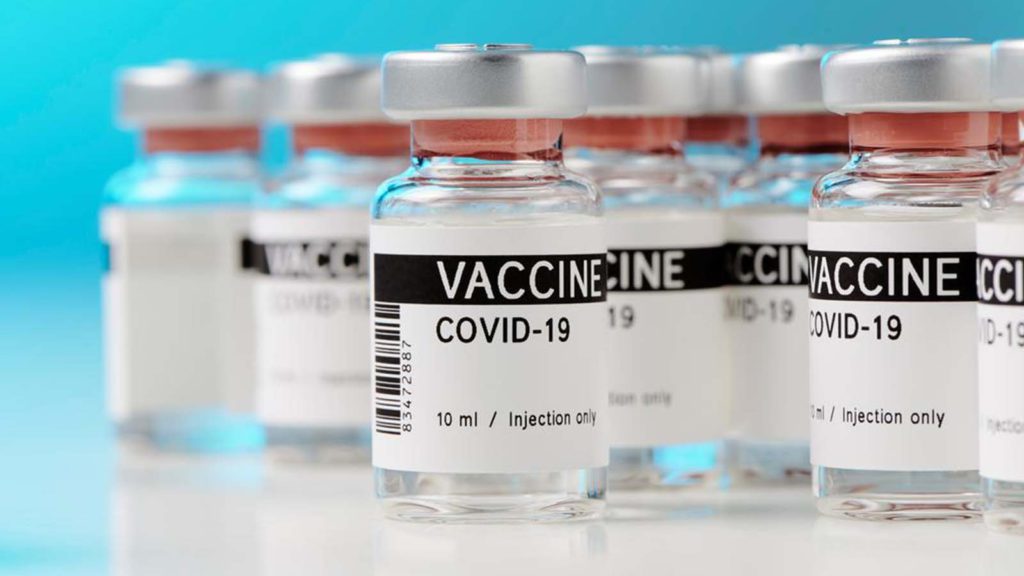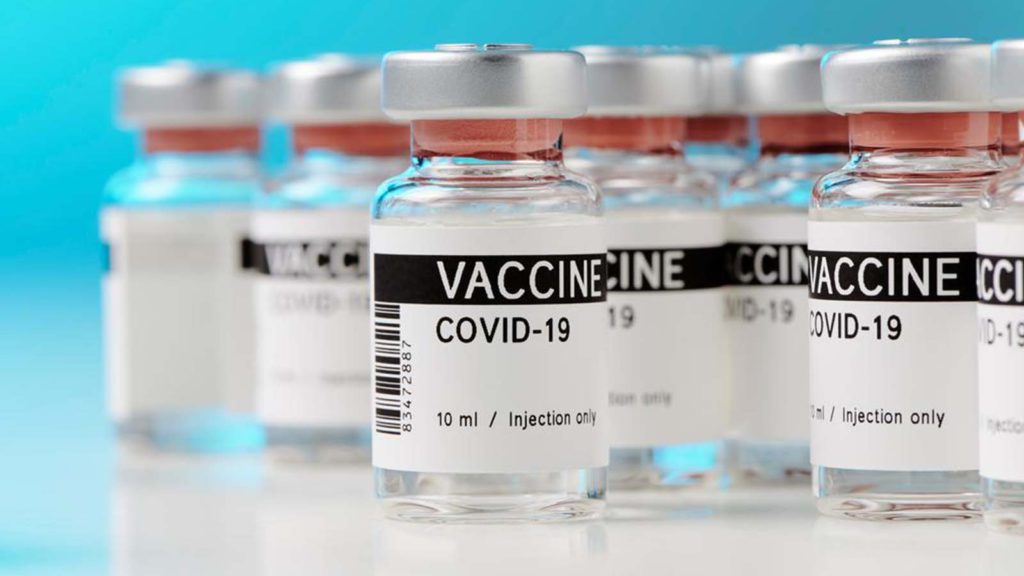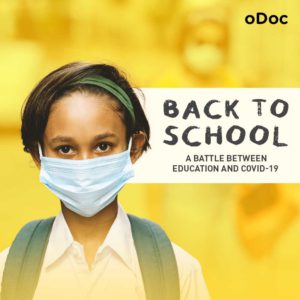
Let’s talk flu, its prevention and home remedies.
Boo-ger season is here! Let’s begin by defining flu (short term for influenza) because it’s usually misunderstood as fever or cold. Flu is a common

With the impending mass COVID19 vaccination rollout in Sri Lanka, there are murmurs about vaccines causing allergic reactions or even deaths. It was only with its mass vaccination programs that Sri Lanka could eradicate diseases like measles or polio. It remains integral to economic recovery that there is public buy-in for a COVID19 vaccination scheme.
To that end, we break down the results from the clinical trials to see whether these rumours have legs or are just in fact, misinformation.
How effective are these vaccines? Little recap from Part 1 of our Blog Series
Clinical trial data has shown that all of the vaccines authorised so far are very effective at preventing symptomatic illness. The table below gives a quick summary of the findings so far:
Importantly ALL the vaccines have 80%+ efficacy against preventing severe disease and 100% against deaths & hospitalisation. After 2.3million deaths around the world, this is welcome news.
1) The trials have 30-40,000 people each to mimic real-world conditions.
Phase III clinical trials are the most extensive, most time consuming and most expensive part of the development process. Scientists look to mimic real-world conditions (different ages, genders, cities etc.). They aim to see whether the vaccine effectively protects against the virus AND whether it causes any side effects in the wider population.
AstraZeneca & Moderna enrolled 30,000 people each in their Phase III, Pfizer/BioNTech 42,000, Novavax 20,000 and Russia’s Sputnik 21,000. In comparison, the GlaxoSmithKline MMR vaccine Phase III trial only enrolled 5,000 participants and is now a widely accepted part of the Sri Lankan immunisation strategy(3).
Sample sizes are large to reduce “sampling error”. Sampling error is the difference between the sampled results and the population’s results if the sample doesn’t represent the population accurately. By enrolling tens of thousands of people – each of these vaccine trials could reduce sampling error and thus be as accurate as possible in their data collection.
2) The trials showed mild reactions in mostly younger people which lasted a median of one day.
Every vaccine trial looks for occurrences of “local” (at the site of injection) and “systemic” (around the body) reactions to the vaccine. Local reactions include injection site pain, redness, swelling. Systemic adverse reactions include fever, fatigue, headache, chills, vomiting, diarrhoea, muscle or joint pain. If reactions occur, they happen within 1-2 days of getting the vaccine and last an average of one day.
AstraZeneca separated its participants into three age groups: 18-55, 56-69, and 70+. In the table below, we can see which local and systemic reactions occurred in the study participants and how long they lasted.
They were more common in the 18-55 age group with most complaints of fatigue, headache and muscle ache soon after getting the vaccine. For all age groups and all complaints, the reactions disappeared in a few days(4).
Pfizer/BioNTech saw younger people experiencing local and systemic adverse reactions more often and in greater intensity than the older age groups. They often felt pain at the injection site at a greater intensity than the older participants. Both groups complained of fatigue, headache and body aches.
All of Moderna’s participants complained of local reactions with pain & temporary swelling of lymph nodes being the most common. However, most reactions only lasted 1 to 2 days. Fatigue was the most commonly reported systemic reaction followed by headaches, body ache, fever and chills for 1-2 days post-vaccination.
3) The vaccines rarely caused severe adverse reactions and showed to be 100% protection against death.
As Phase III is designed to mimic the real population, events such as deaths or heart attacks that will typically occur in the real population also occur in the trial groups. The safety boards’ responsibility is to review the data to decide which events were caused by the vaccine and which occurred naturally. For this, they look at rates of these events in the general population by age group and deep dive into each case’s particulars.
None of the vaccine trials (including Russia’s Sputnik) has had a severe adverse effect resulting in death as a result of the vaccines (5)(6). Of the 84 severe adverse events (in 11,000 candidates) reported by AstraZeneca, only one classified as possibly related to the vaccine(4). This one case is 0.000085% of the total study population, a tiny percentage.
All of the vaccines peer-reviewed so far shows to have 100% efficacy against death & hospitalisation.
Weighing up the benefits
COVID19 has caused 2.3million deaths around the world(8) and over 300 deaths in Sri Lanka. None of the COVID19 vaccines reviewed thus far has yet had a death determined to result from the vaccine. Adverse events are most likely to occur soon after vaccine administration. With over 128 million doses being administered globally, there have been less than 0.005% reports of severe adverse reactions.
The choice is between contracting a virus known to cause lasting damage to the body (if not death) and taking a vaccine that is found to prevent death 100% of the time. Moreover, the vaccines reviewed thus far are not known to cause severe adverse events; the winner becomes abundantly clear.
We would urge the Sri Lankan public to accept the AstraZeneca or Pfizer vaccines.
Read our previous blog on Do the vaccines actually work?

ලංකාවේ COVID19 එන්නත ලබා දීමට පටන්ගැනීමත් සමඟ අසාත්මිකතා හෝ මරණ පවා ඇති කරන එන්නත් පිළිබඳව මැසිවිලි නැඟේ. සරම්ප හෝ පෝලියෝ වැනි රෝග තුරන් කිරීමට ලංකාවට හැකි වූයේ විශාල එන්නත් කිරීමේ වැඩසටහන් මගින් පමණි. COVID19 එන්නත් කිරීමේ යෝජනා වැඩසටහන සඳහා මහජන සහය තිබීම ආර්ථික පුනර්ජීවනයකට අත්යාවශ්යා කරුණකි.
ඒ සඳහා, මෙම කටකතා වලට පදනමක් තිබේද යන්න හෝ ඒවා ඇත්ත වශයෙන්ම වැරදි තොරතුරුද යන්න සොයා බැලීමට සායනික අත්හදා බැලීම්වල සොයාගැනීම් අපි නිරීක්ෂණය කර බලමු.
සායනික අත්හදා බැලීම්
එන්නත් කිරීම මිනිසුන්ට ආරක්ෂිත සහ ඵලදායීද යන්න තීරණය කිරීම සඳහා දත්ත ලබා ගැනීමට විද්යාඥයින් සායනික අත්හදා බැලීම් සැලසුම් කරයි. මිනිසුන්ට එන්නත් ලැබීමෙන් පසු දරුණු අහිතකර සිදුවීම් (උදා: අසාත්මිකතා, මරණ ආදිය) සිදුවන්නේ දැයි ඔවුන් නිවැරදිව සොයා ගැනීමට උත්සාහ කරයි. අහිතකර බලපෑම් සිදුවුවහොත්, අත්හදා බැලීම් මදකට නවත්වන අතර ස්වාධීන විශේෂඥයින් සහ නියාමකයින්ගෙන් සමන්විත මණ්ඩලයක් විසින් ආරක්ෂිත දත්ත සමාලෝචනය කරනු ලැබේ. සායනික අත්හදා බැලීමේ නිවැරදිතාව අතිශයින්ම වැදගත්ය; එබැවින් ආරක්ෂක සමාලෝචන බැරෑරුම් ලෙස සලකනු ලැබේ. සමහර විට, තීරණයක් ගන්නා තෙක් මාස ගණනක් සායනික අත්හදා බැලීම් නතර කළ හැකිය. අහිතකර බලපෑම් එන්නත නිසාද නැතිනම් අහම්බෙන්ද යන්න ආරක්ෂක මණ්ඩලය තීරණය කරයි. එන්නත නිසා නම්, සායනික අත්හදා බැලීම් නැවැත්වීමට පවා පියවර ගනු ලැබේ.
පුද්ගලයන් 30,000 කින් එක අයෙකුට සැක සහිත අහිතකර බලපෑමක් වර්ධනය වීම නිසා 2020 සැප්තැම්බර් මාසයේදී AstraZeneca සිය ස්වේච්ඡා සායනික අත්හදා බැලීම් (1) නවතා දැමීය. එන්නත අහිතකර බලපෑමකට හේතු වී ඇත්දැයි තීරණය කිරීම සඳහා ආරක්ෂක මණ්ඩලයක් විසින් දත්ත සමාලෝචනය කරන අතරතුර එන්නත ලබා දීම නවත්වන ලදී. සමාලෝචනයෙන් පසුව, මණ්ඩලය සායනික අත්හදා බැලීම් ආරක්ෂිත බව සනාථ කළ අතර එය නැවත ආරම්භ කිරීම සඳහා අවසර ලබා දුන්නේය (2).
මෙම එන්නත් කෙතරම් ඵලදායීද? අපගේ බ්ලොග් ලිපි මාලාවේ 1 වන කොටසේ කරුණු කෙටියෙන් විමසමු
සායනික අත්හදා බැලීමේ දත්ත මගින් පෙන්නුම් කර ඇත්තේ මෙතෙක් ලබා දී ඇති සියලුම එන්නත් රෝග ලක්ෂණ වැළැක්වීම සඳහා ඉතා ඵලදායී බවයි. පහත වගුවේ මෙතෙක් සොයාගත් කරුණු පිළිබඳ සාරාංශයක් ලබා දෙයි:
වැදගත් වන්නේ සියලුම එන්නත් වල දරුණු රෝග වැළැක්වීමට 80% + කාර්යක්ෂමතාවයක් සහ මරණ හා රෝහල් ගතවීම් වලට එරෙහිව 100% ක කාර්යක්ෂමතාවයක් ඇත. ලොව පුරා මිලියන 2.3 ක මරණ වලින් පසු මෙය හොඳ පුවතකි.
1) සැබෑ ලෝක තත්වයන් අනුකරණය කිරීම සඳහා අත්හදා බැලීම්වල පුද්ගලයන් 30-40,000 බැගින් සිටී.
තුන්වන අදියර සායනික අත්හදා බැලීම් යනු එන්නත් සංවර්ධනයේ වඩාත්ම පුළුල්, වැඩි කාලයක් ගතවන සහ මිල අධිකම කොටසයි. විද්යාඥයයන් සැබෑ ලෝක තත්වයන් (විවිධ වයස්, ස්ත්රී පුරුෂ, නගර ආදිය) අනුකරණය කිරීමට බලාපොරොත්තු වේ. එන්නත වෛරසයෙන් ඵලදායී ලෙස ආරක්ෂාව ලබා දෙයිද යන්න සහ එය පුළුල් ජනගහනයේ අතුරු ආබාධ ඇති කරයිද යන්න සොයා බැලීම ඔවුන්ගේ අරමුණයි.
AstraZeneca සහ Moderna ඔවුන්ගේ තුන්වන අදියර සඳහා පුද්ගලයින් 30,000, Pfizer/BioNTech 42,000, Novavax 20,000 සහ රුසියාවේ Sputnik පුද්ගලයින් 21,000 බැගින් බඳවා ගත්හ. ඊට සාපේක්ෂව, GlaxoSmithKline MMR එන්නත තුන්වන අදියර අත්හදා බැලීම සඳහා පුද්ගලයින් 5,000ක් පමණක් ඇතුළත් වූ අතර එය දැන් ලංකා ප්රතිශක්තිකරණ වැඩසටහනේ (3) පුළුල් ලෙස පිළිගත් කොටසකි.
“නියැදි දෝෂය”අඩු කිරීම සඳහා නියැදිය විශාලය. නියැදි දෝෂය යනු නියැදිය ජනගහනය නිවැරදිව නියෝජනය නොකරන්නේ නම් නියැදිය සහ ජනගහනය අතර වෙනසයි. දස දහස් ගණනින් පුද්ගලයින් බඳවා ගැනීමෙන් – මෙම එක් එක් එන්නත් අත්හදා බැලීම් වල නියැදි දෝෂ අවම කර ගත හැකි අතර එමඟින් ඔවුන්ගේ දත්ත එකතු කිරීමේදී හැකි තරම් නිවැරදි විය හැකිය.
2) අත්හදා බැලීම්වලින් පෙන්නුම් කළේ බොහෝ විට තරුණ අය තුළ සියුම් අහිතකර බලපෑම් ඇති අතර එය එක් දිනක පමණ කාලයක් පැවතුනු බවයි.
සෑම එන්නත අත්හදා බැලීමක්ම “දේශීය” (එන්නත් කරන ස්ථානයේ) සහ “පද්ධතිමය” (ශරීරය වටා) අහිතකර බලපෑම් සිදු වේද යන්න සොයා බලයි. දේශීය අහිතකර බලපෑම් අතරට එන්නත් කරන ස්ථානයේ වේදනාව, රතු පැහැය, ඉදිමීම ඇතුළත් වේ. පද්ධතිමය අහිතකර බලපෑම් අතරට උණ, තෙහෙට්ටුව, හිසරදය, සීතල දැනීම, වමනය, පාචනය, මාංශ පේශි හෝ සන්ධි වේදනාව ඇතුළත් වේ. අහිතකර බලපෑම් සිදුවුවහොත්, එන්නත ලබා දින 1-2 ක් ඇතුළත ඒවා සිදු වන අතර එක් දිනක් පවතිනු ඇත.
AstraZeneca එහි සහභාගිවන්නන් වයස් කාණ්ඩ තුනකට වෙන් කළේය: 18-55, 56-69 සහ 70+. පහත වගුවේ, සායනික අත්හදා බැලීම් සහභාගිවන්නන් තුළ කුමන දේශීය හා පද්ධතිමය අහිතකර බලපෑම් සිදුවී ඇත්ද සහ ඒවා කොපමණ කාලයක් පැවතුණේද යන්න අපට දැක ගත හැකිය.
වයස අවුරුදු 18-55 කාණ්ඩයේ අය අතර බහුලව දක්නට ලැබුනේ එන්නත ලබා ගත් විගසම තෙහෙට්ටුව, හිසරදය සහ මාංශ පේශි කැක්කුමයි. සියලුම වයස් කාණ්ඩ සඳහා, දින කිහිපයකින් අහිතකර බලපෑම් අතුරුදහන් විය (4).
Pfizer/BioNTech වැඩිහිටි වයස් කාණ්ඩවලට වඩා තරුණ වයස් කාණ්ඩවල දේශීය හා පද්ධතිමය අහිතකර බලපෑම් අත්විඳින බව දුටුවේය. වැඩිහිටි සහභාගිවන්නන්ට වඩා වැඩි තී වේදනාවක් එන්නත් කරන ස්ථානයේ ඔවුන්ට බොහෝ විට දැනුනි. කණ්ඩායම් දෙකම තෙහෙට්ටුව, හිසරදය සහ ශරීර කැක්කුම ගැන පැමිණිලි කළහ.
Moderna සහභාගිවන්නන් දේශීය වේදනාවෙන් හා තාවකාලිකව වසා ගැටිති ඉදිමීම ගැන පැමිණිලි කළහ. කෙසේ වෙතත්, බොහෝ අහිතකර බලපෑම් පැවතියේ දින 1-2 දක්වා පමණි. තෙහෙට්ටුව වැඩිපුරම වාර්තා වූ පද්ධතිමය අහිතකර බලපෑම වන අතර ඉන් පසු හිසරදය, ශරීර කැක්කුම, සහ උණ එන්නත් කිරීමෙන් දින 1-2 ක් පසුව පැවතුණි.
3) එන්නත් ඉතා කලාතුරකින් දරුණු අහිතකර බලපෑම් ඇති කළ අතර මරණයෙන් 100% ක් ආරක්ෂා කිරීමට සමත් විය.
තුන්වන අදියර සැබෑ ජනගහනය අනුකරණය කිරීම සඳහා නිර්මාණය කර ඇති හෙයින්, සැබෑ ජනගහනය තුළ සිදුවිය හැකි මරණ හෝ හෘදයාබාධ වැනි සිදුවීම් ද අත්හදා බැලීම් කණ්ඩායම් තුළ සිදු වේ. ආරක්ෂණ මණ්ඩලවල වගකීම වන්නේ එන්නත නිසා ඇති වූ සිදුවීම් සහ ස්වාභාවිකව සිදු වූ සිදුවීම් තීරණය කිරීම සඳහා දත්ත සමාලෝචනය කිරීමයි. මේ සඳහා, ඔවුන් වයස් කාණ්ඩ අනුව ජනගහනයේ මෙම සිදුවීම්වල අනුපාත දෙස බලන අතර එක් එක් සිද්ධියේ තොරතුරු ගැඹුරට කිමිදේ.
එන්නත් අත්හදා බැලීම් කිසිවක් (රුසියාවේ Sputnikද ඇතුළුව) එන්නත් හේතුවෙන් මරණයට පත්වීමේ බරපතල අහිතකර බලපෑමක් ඇති කර නැත. (5) (6) AstraZeneca විසින් වාර්තා කරන ලද දරුණු අහිතකර සිදුවීම් 84න් (අපේක්ෂකයින් 11,000 කින්), එන්නත හා සම්බන්ධ විය හැකි යැයි වර්ගීකරණය කර ඇත්තේ එක් අයෙකු පමණි (4). මෙම එක් සිද්ධියක් සමස්ත අධ්යයන ජනගහනයෙන් 0.000085%ක් වන අතර එය ඉතා සුළු ප්රතිශතයකි.
මේ දක්වා සම-සමාලෝචනය කරන ලද සියලුම එන්නත් වලින් පෙන්නුම් කරන්නේ මරණයට හා රෝහල්ගත වීමට එරෙහිව 100% ක කාර්යක්ෂමතාවයක් ඇති බවයි.
එන්නතෙන් ලැබෙන වාසි මොනවාද?
COVID19 හේතුවෙන් ලොව පුරා මිලියන 2.3 ක් මිය ගොස් ඇති අතර (8) ලංකාවේ මරණ 300 කට අධික ගණනක් මෙම ලිපිය ලියන විට වාර්තා වී ඇත. මෙතෙක් සමාලෝචනය කරන ලද COVID19 එන්නත් කිසිවක් හේතුවෙන් මරණයක් සිදුවී නැත. එන්නත් ලබාදීමන් පසු අහිතකර සිදුවීම් බොහෝ විට සිදුවනු ඇත. ගෝලීය වශයෙන් එන්නත් මිලියන 128 කට අධික ගණනක් දැනට ලබා දී ඇති අතර, දරුණු අහිතකර බලපෑම් පිළිබඳ වාර්තා 0.005% කටත් වඩා අඩුය.
අපට දැන් ඇති තීරණය වන්නේ, ශරීරයට සදාකාලික හානියක් සිදු වන බව දන්නා වෛරසයක් වැළඳීම (මරණය සිදු නොවේ නම්) හෝ 100% ක්ම මරණය වැළැක්වීම සඳහා සොයා ගන්නා එන්නතක් ගැනීම වේ. එපමණක් නොව, මෙතෙක් සමාලෝචනය කරන ලද එන්නත් දරුණු අහිතකර සිදුවීම් ඇති නොකරන බව සනාථ වී ඇත. එසේනම් තීරණය බොහෝ සෙයින් පැහැදිලි වේ.
AstraZeneca හෝ Pfizer එන්නත භාර ගන්නා ලෙස අපි ලාංකික ජනතාවගෙන් ඉල්ලා සිටිමු.
Sources

Boo-ger season is here! Let’s begin by defining flu (short term for influenza) because it’s usually misunderstood as fever or cold. Flu is a common

As Sri Lanka rolls out its COVID19 booster program, we break down the answers to your most pressing questions. Firstly, what is a booster? A

Back to School – A Battle Between Education and COVID-19 Students are finally returning to school. But as parents, many are worried about COVID-19 safety.
இப்போது மருத்துவ குறிப்புகளை உடனுக்குடன் உங்கள் இன்பாக்ஸ் இல் பெற்றுக்கொள்ளுங்கள்.